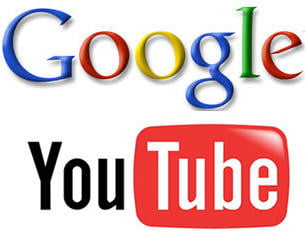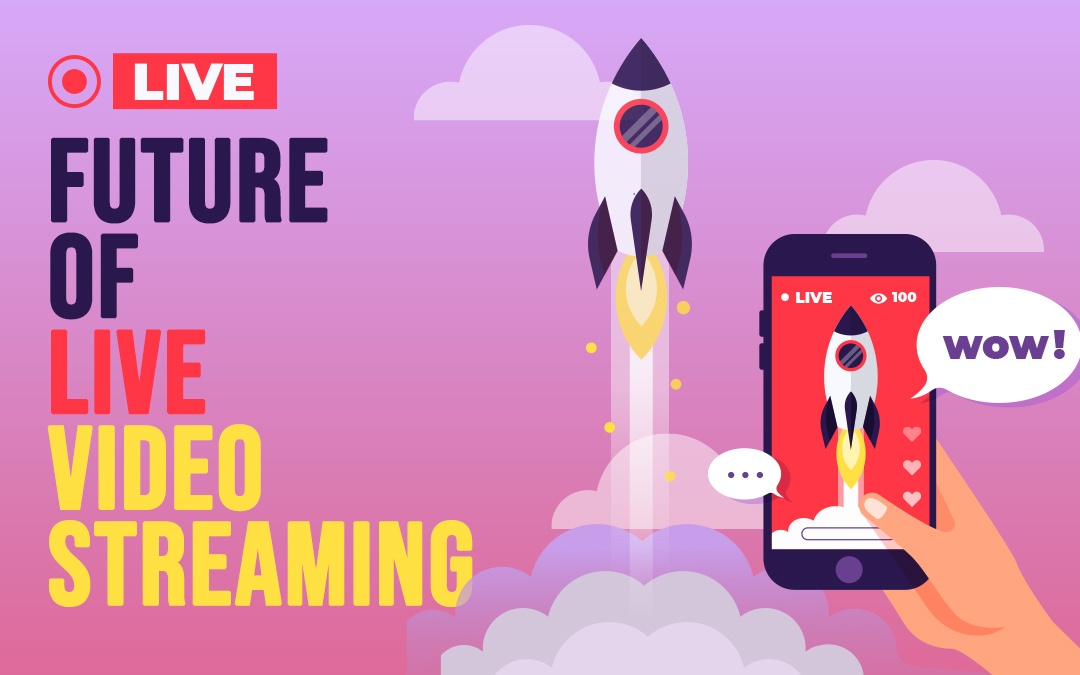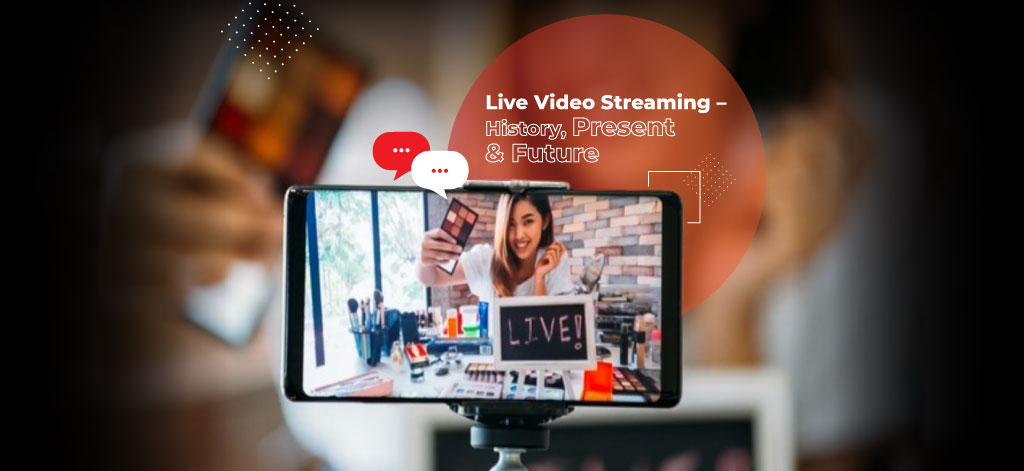To say that live-streaming is the ‘jam’ of today’s times, won’t be an exaggeration. In the past 5 to 10 years, live video broadcast services have really taken off.
Today billions of people worldwide watch live-stream videos on their mobile devices. Live video broadcast services are the top rung of marketing services used by top leaders in business as well as new, up & coming services that want to get noticed.
Top live video streaming services around the world help companies increase their views, audience engagement & interaction by live-streaming online town hall meetings, product launches, public Q&A sessions, etc. For the novice readers who haven’t quite followed live video broadcast services throughout their exponential rise phase, this article will help them know more about it.
In this blog, we will discuss the history of live-streaming, the present form of live-streaming, & of course, the future of live video streaming.
Table of Contents
Live Video Streaming: A History
The decades of the 1990s & 2000s were the official era of what is titled today, ‘The Internet Explosion’. People started getting used to the Internet, dial-up networks were becoming a common sight in every household, & people started discovering a brand new world of information & entertainment on their computers!

This happened in parts due to the governments around the world, increasing the technical bandwidth of computers. With the birth of the Internet, came the birth of live-streaming content. However, these live-streams were primarily single-event broadcasts, & not a continuous stream of 24×7 live-streaming that we see today.
Also, most of the first live-streams happened around audio rather than video, since it was easier to manipulate audio than video back in those days digitally.
1. The first concert live-streaming took place in 1993:
Garage band Steve Tire Damage’s 1993 concert officially became the first event to be live-streamed over the Internet on a massive scale. The band live-streamed a Xerox PARC concert to its fans around the world.
Being the first, however, doesn’t necessarily mean the best. The live-stream had a resolution of 100 lines & a tardy frame rate of 4 per second. Also striking was the fact that the live-stream took almost half of the entire Internet’s bandwidth!
2. The first large scale live-video broadcast took place in 1996:
The first large-scale live video broadcast took place in 1996 with the Tibetan Freedom Concert. Top musical acts of the 90s such as The Beastie Boys, Rage Against The Machine, Bjork & The Smashing Pumpkins headlined the concert & were featured in the live-stream.
3. Live-stream of the first online presidential address took place in 1999:
The year 1999 saw a national political event live-streamed for the first time; an online town hall meeting with United States President Bill Clinton.
4. Macromedia Flash launches Version6, & support for RTMP:
Flash player was a major fuel for online videos. The creation of Flash Player served a major purpose in putting online videos on the global platform, & facilitated online streaming of videos. The Flash Player was initially launched as a browser plug-in to enable users to play streaming audio & video formats.
In 2002, Macromedia launched version 6 of Flash Player that supported Real-Time Media Protocol(RTMP), which hugely supported live-streaming at that time, & is in fact, still used for some live-streaming use cases.
5. YouTube & Google Video were launched in 2005:

2005 saw a major live-streaming boom with the launch of online video juggernaut service YouTube, & Google Video. As the broadband Internet began to plough into people’s lives, it became easier for people to live-stream videos online.
The two services later merged into one, & continue to be the world’s largest video streaming platform today.
6. Many of top live video streaming services were launched in 2010:
2010 saw a rapid launch of some of the world’s biggest live video broadcast services, & the rise of some of the best live video streaming platforms like Facebook, Youtube, Instagram, etc.

The year of 2010 collided with the exponential rise of online video & internet usage almost doubled all around the world. Many businesses began considering the need & profits of live-streaming online town hall meetings, launches, executive addresses, etc. to boost online audience & user engagement.
5. Olympics were live-streamed for the first time in 2012:
Live-streaming began to be taken seriously as a bonafide marketing solution in 2012. After all, 2012 was the year NBC live-streamed the Olympics games for the first time ever! The practice of live-stream Olympics was adopted as a staple practice in 2016. Every game after 2016 has been live-streamed globally.
All of these points highlight the history of live-streaming; how it started, how it grew & what all milestones it reached. Further below in the article, we will see the present day scenario around live-streaming & the future of live-streaming.
Video-Live Streaming of Today:
Live-streaming in today’s time is fully developed, accessible & easy-to-deploy. Such is its popularity that the biggest companies in the world utilize live-streaming for their business needs. Not just companies, but universities, entertainment typhoons & charity organizations also make use of live-streaming to hook people & get the word out.
Unlike the early years of the 2000s, today it’s possible to live-stream videos online from a mobile handset device, & conduct multi-camera live streaming webcasts. And guess what, live-streaming in today’s age is much easier & affordable than even watching TV.
Global content delivery networks today are able to live-stream videos to audiences globally via live video broadcast services. Live-Streams today rack up millions of views globally; as an example, take Super Bowl LII, which amassed more than 3 million concurrent viewers around the world.
The Future of Live-Streaming
With the launch of 5G networks being around the corner, live-streaming in the future is set to undergo some major changes & revamps. Live-Streaming will still be the holding force in the online video without a doubt, but it will need to keep up with the technological circles to remain ever relevant & useful.

Here are some major things that we can look forward to with respect to the future of live-streaming:
- Live-Streaming will be 5G’s pivoting force
- Efficient security additions will be made to the features of a secure online video platform
- Live-Streaming will see new protocols being introduced & launched
- Next-Gen codecs & live-streaming formats will be introduced
- Increased attention will be paid to secure live-video streaming platforms
All of these additions will help live-streaming become an ever more powerful marketing tool in the coming years, & put it on the course to dominate online video consumption.




















